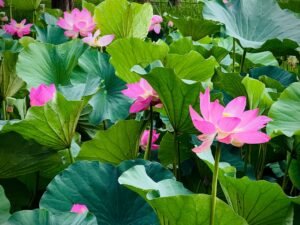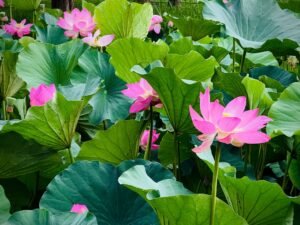

Fashionable Chinese Vocabulary: Clothing and Accessories
Learning Chinese vocabulary related to fashion and style is becoming increasingly important in today’s globalized world. As China continues to grow as a major player in the fashion industry, knowing the right words to describe clothing, footwear, accessories, jewelry, bags, hats, scarves, and belts can greatly enhance communication and understanding in both social and professional settings.
In social settings, being able to discuss fashion and style in Chinese can help you connect with Chinese friends and colleagues who are interested in fashion. It can also help you navigate shopping experiences in China, whether you’re looking for the latest trends or trying to find the perfect outfit for a special occasion. In professional settings, having knowledge of fashionable Chinese vocabulary can be beneficial if you work in the fashion industry or have business dealings with Chinese companies. It shows that you have an understanding of Chinese culture and can help you build relationships with Chinese clients or partners.
Table of Contents
ToggleChinese Vocabulary for Clothing
When it comes to clothing, there are several common words in Chinese that you should know. For example, “shirts” are called “衬衫 (chènshān)”, “pants” are called “裤子 (kùzi)”, “dresses” are called “连衣裙 (liányīqún)”, and “jackets” are called “夹克 (jiákè)”. These words are essential for describing different types of clothing items.
In addition to these basic words, there are also many adjectives that can be used to describe clothing in Chinese. For example, “colorful” is “五颜六色的 (wǔyánliùsè de)”, “stylish” is “时尚的 (shíshàng de)”, and “comfortable” is “舒适的 (shūshì de)”. These adjectives can help you express your opinions about clothing and describe your personal style.
Chinese Vocabulary for Footwear
When it comes to footwear, there are also several important words to know in Chinese. For example, “sneakers” are called “运动鞋 (yùndòngxié)”, “boots” are called “靴子 (xuēzi)”, and “sandals” are called “凉鞋 (liángxié)”. These words can help you navigate shoe shopping in China and describe the type of footwear you’re looking for.
Just like with clothing, there are also many adjectives that can be used to describe footwear in Chinese. For example, “fashionable” is “时尚的 (shíshàng de)”, “practical” is “实用的 (shíyòng de)”, and “comfortable” is “舒适的 (shūshì de)”. These adjectives can help you express your preferences and opinions about different types of shoes.
Chinese Vocabulary for Accessories
Accessories are an important part of any outfit, and knowing the right words to describe them in Chinese can be very useful. For example, “sunglasses” are called “太阳镜 (tàiyángjìng)”, “watches” are called “手表 (shǒubiǎo)”, and “hats” are called “帽子 (màozi)”. These words can help you communicate your accessory preferences and describe the accessories you’re looking for.
In addition to these basic words, there are also many adjectives that can be used to describe accessories in Chinese. For example, “trendy” is “时尚的 (shíshàng de)”, “classic” is “经典的 (jīngdiǎn de)”, and “functional” is “实用的 (shíyòng de)”. These adjectives can help you express your opinions about accessories and describe your personal style.
Chinese Vocabulary for Jewelry
Jewelry is another important aspect of fashion, and knowing the right words to describe different types of jewelry in Chinese can be very helpful. For example, “necklaces” are called “项链 (xiàngliàn)”, “bracelets” are called “手链 (shǒuliàn)”, and “earrings” are called “耳环 (ěrhuán)”. These words can help you communicate your jewelry preferences and describe the type of jewelry you’re looking for.
Just like with clothing and accessories, there are also many adjectives that can be used to describe jewelry in Chinese. For example, “elegant” is “优雅的 (yōuyǎ de)”, “flashy” is “华丽的 (huálì de)”, and “delicate” is “精致的 (jīngzhì de)”. These adjectives can help you express your opinions about jewelry and describe your personal style.
Chinese Vocabulary for Bags and Purses
Bags and purses are essential accessories for many people, and knowing the right words to describe them in Chinese can be very useful. For example, “backpacks” are called “背包 (bēibāo)”, “totes” are called “手提包 (shǒutíbāo)”, and “clutches” are called “手拿包 (shǒunábāo)”. These words can help you communicate your bag and purse preferences and describe the type of bag or purse you’re looking for.
In addition to these basic words, there are also many adjectives that can be used to describe bags and purses in Chinese. For example, “spacious” is “宽敞的 (kuānchǎng de)”, “stylish” is “时尚的 (shíshàng de)”, and “practical” is “实用的 (shíyòng de)”. These adjectives can help you express your opinions about bags and purses and describe your personal style.
Chinese Vocabulary for Hats and Caps
Hats and caps are not only functional accessories but also fashion statements, and knowing the right words to describe them in Chinese can be very helpful. For example, “baseball caps” are called “棒球帽 (bàngqiú mào)”, “fedoras” are called “小礼帽 (xiǎolǐmào)”, and “beanies” are called “针织帽 (zhēnzhī mào)”. These words can help you communicate your hat and cap preferences and describe the type of hat or cap you’re looking for.
Just like with other accessories, there are also many adjectives that can be used to describe hats and caps in Chinese. For example, “trendy” is “时尚的 (shíshàng de)”, “casual” is “休闲的 (xiūxián de)”, and “sporty” is “运动的 (yùndòng de)”. These adjectives can help you express your opinions about hats and caps and describe your personal style.
Chinese Vocabulary for Scarves and Shawls
Scarves and shawls are not only practical accessories but also stylish additions to any outfit, and knowing the right words to describe them in Chinese can be very useful. For example, “silk scarves” are called “丝巾 (sījīn)”, “wool shawls” are called “羊毛披肩 (yángmáo pījiān)”, and “infinity scarves” are called “无限围巾 (wúxiàn wéijīn)”. These words can help you communicate your scarf and shawl preferences and describe the type of scarf or shawl you’re looking for.
In addition to these basic words, there are also many adjectives that can be used to describe scarves and shawls in Chinese. For example, “cozy” is “舒适的 (shūshì de)”, “fashionable” is “时尚的 (shíshàng de)”, and “versatile” is “多功能的 (duōgōngnéng de)”. These adjectives can help you express your opinions about scarves and shawls and describe your personal style.
Chinese Vocabulary for Belts and Buckles
Belts and buckles are not only functional accessories but also stylish additions to any outfit, and knowing the right words to describe them in Chinese can be very helpful. For example, “leather belts” are called “皮带 (pídài)”, “metal buckles” are called “金属扣 (jīnshǔ kòu)”, and “woven belts” are called “编织腰带 (biānzhī yāodài)”. These words can help you communicate your belt and buckle preferences and describe the type of belt or buckle you’re looking for.
Just like with other accessories, there are also many adjectives that can be used to describe belts and buckles in Chinese. For example, “stylish” is “时尚的 (shíshàng de)”, “durable” is “耐用的 (nàiyòng de)”, and “adjustable” is “可调节的 (kě tiáojié de)”. These adjectives can help you express your opinions about belts and buckles and describe your personal style.
Chinese Classes for Learning Fashionable Chinese Vocabulary: Clothing and Accessories
If you’re interested in learning fashionable Chinese vocabulary related to clothing and accessories, there are several options available to you. Online classes are a convenient way to learn at your own pace and from the comfort of your own home. There are many websites and apps that offer Chinese language courses, including specific courses focused on fashion and style vocabulary.
In-person classes are another option if you prefer a more traditional classroom setting. Many universities and language schools offer Chinese language courses, and some may even have specialized courses or workshops focused on fashion and style vocabulary. These classes often provide opportunities for practice and interaction with other students, which can be beneficial for improving your communication skills.
To find and enroll in these classes, you can start by searching online for language schools or universities in your area that offer Chinese language courses. You can also check with local community centers or cultural organizations, as they may offer Chinese language classes or be able to provide recommendations. Additionally, there are many online resources available that can help you find reputable language schools or online courses.
Taking classes to learn fashionable Chinese vocabulary can have many benefits. Not only will it improve your communication skills in social and professional settings, but it will also deepen your understanding of Chinese culture and fashion. By learning the right words to describe clothing, footwear, accessories, jewelry, bags, hats, scarves, and belts, you’ll be able to express yourself more effectively and connect with others who share your interest in fashion. So why wait? Start learning fashionable Chinese vocabulary today!
If you’re interested in expanding your vocabulary beyond fashion, you might want to check out this article on “Mandarin for the Environmentalist: Discussing Sustainability.” It’s a great resource for those who want to learn HSK5-6 level Chinese and engage in conversations about environmental issues. Click here to read more!
FAQs
What is the article about?
The article is about fashionable Chinese vocabulary related to clothing and accessories.
What are some common Chinese words for clothing?
Some common Chinese words for clothing include 衣服 (yīfú) for clothes, 外套 (wàitào) for coat, 裤子 (kùzi) for pants, and 鞋子 (xiézi) for shoes.
What are some common Chinese words for accessories?
Some common Chinese words for accessories include 饰品 (shìpǐn) for jewelry, 帽子 (màozi) for hats, 手表 (shǒubiǎo) for watches, and 眼镜 (yǎnjìng) for glasses.
What is the difference between 穿 (chuān) and 戴 (dài)?
穿 (chuān) means to wear clothing, while 戴 (dài) means to wear accessories such as jewelry, hats, or glasses.
What are some fashion trends in China?
Some current fashion trends in China include streetwear, oversized clothing, and bold colors and patterns.
How can I use these vocabulary words in conversation?
You can use these vocabulary words in conversation by incorporating them into sentences when discussing clothing and accessories. For example, you could say “我喜欢这件外套” (wǒ xǐhuān zhè jiàn wàitào) to say “I like this coat.”
If you want to learn Chinese, you can register for classes here. We look forward to hearing from you and helping you become fluent in Chinese!
If you want to learn Norwegian, you can register for classes here. We look forward to hearing from you and helping you become fluent in Norwegian.





